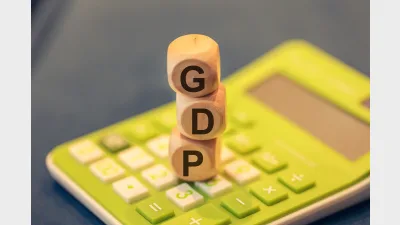Funds wrestle with ‘why bother’ attitude to emerging markets



While the first decade of the 21st century proved outstanding for emerging markets (EM), the years following 2010 have been more difficult, leaving managers to determine how, and if, they can continue to hold meaningful allocations to the asset class.
In its ‘Celebrating 30 Years in EM’ report released earlier this year, Robeco told “a story of two decades”, comparing the performance of EM against their developed counterparts.
Namely, Robeco elaborated that between 2000 and 2010, alongside growth in China’s GDP by an average of more than 10.5 per cent, emerging markets benefited from the tailwinds of globalisation and increased digitisation.
Over the same period, developed markets struggled to perform. While recovering from the tech ‘dot.com’ bubble that burst in 2001 they encountered the global financial crisis in 2008–09, with a consensus emerging that US dominance had come to an end.
“EM countries were going to be the future,” Robeco said, and added this view could not have been more wrong in the decade that followed.
From 2011 to date, a number of factors, including quantitative easing in developed markets, and artificially low interest rates, incentivised US corporate borrowing, increased leverage and stock buybacks, resulting in the expansion of PE multiples and the outperformance of developed markets.
At the same time, the US dollar strengthened, eroding the relative competitiveness of EM exports, while commodity prices eased and geopolitical concerns intensified.
Speaking at an investment conference in April, Victorian Funds Management Corporation’s chief investment officer Russell Clarke raised concerns that EM could soon succumb to the hurdles of deglobalisation spurred by the pandemic and technological trends.
“The conventional wisdom has been, if you invest anywhere where there’s strong growth, then you will do well from a return standpoint. The complete opposite has actually been the case. Emerging markets have had a good economic outcome as a whole, but delivered a poor return to investors,” he pointed out.
“There might still be economic growth there, but we’re really thinking: does it make sense to have a material allocation to emerging markets?”
He contended that, while this doesn’t mean funds won’t invest in some, well-performing, EM countries, Clarke argued that, “as a whole, it may not be the place to be.”
Earlier this year, research from VanEck also explained that, while emerging markets have established their significant growth potential, harvesting that growth in an investment portfolio has proved challenging.
“Investing in emerging markets is associated with being expensive because brokerage fees are higher and these markets require more specialist knowledge, so many investors have been happy to pay higher fees for active management where a professional picks the stocks,” said portfolio manager and key author of the research paper, Factor-in Emerging Markets, Cameron McCormack.
“The problem is that the majority of these professional investors have underperformed the market.”
Over a 10-year horizon, the MSCI Emerging Markets Index has underperformed, delivering 2.66 per cent against returns of 9.13 per cent from the MSCI World Index.
Speaking to Super Review, Steven Gray, portfolio manager at Eastspring Investments, said that conversations with Australian institutional investors haven’t been dissimilar to those had with their US and European counterparts when it comes to EM allocations.
“When you had a really long period as we’ve had, almost 15 years of EM underperformance, and you’ve perhaps come into the industry in that period, you are very skewed towards thinking ‘oh, why even bother?’” he explained.
However, he held an optimistic view of the asset class: “If you have a longer history, you’ve been with the industry for 30 years and you’ve seen what emerging markets can deliver when they turn around, I think it gives you pause.”
For Gray, at present, most funds appear to be sticking with “at least a neutral” allocation to EM.
“I always come back to, you have to look at how that’s expressed in valuations, so yes, emerging markets have disappointed, but that’s priced in,” Gray said.
“I would say that there is a mix [of opinions]. I haven’t met anyone here who said ‘I’m giving up on emerging markets.’ I’ve met a lot of people who said, ‘I’ve been very disappointed, I have had a full allocation and it hasn’t really worked for me’.
“So yes, I don’t think we’re seeing a lot of people who are aggressively overweight in emerging markets. I have seen some people who were overweight and have come back to neutral, but they’re saying they’re not going below neutral because when this turns, this could be very powerful.”
Gray highlighted an almost anticipatory approach to the idea that tides will turn: “I think they’re all aware that they don’t want to be caught [off guard] when this happens.”
In November last year, NAB’s biennial Super Insights Report, which surveyed 41 funds representing more than $2 trillion in assets under management, found 35 of those funds were invested in EM, with an average allocation of 4.9 per cent deployed to the asset class.
Australia’s sovereign wealth fund, $285 billion Future Fund, holds a 6.8 per cent allocation to emerging markets according to its latest portfolio disclosures.
Looking forward, Gray said the dominance of US stocks could play a part in how managers think through their portfolio allocations.
Gray added: “You look at the U.S, you say ‘there’s seven stocks driving that market, and what happens when they stop running?’
“You look at developed markets as a whole and you say ‘well, apart from the US, there isn’t that much opportunity, whereas emerging markets are still growing much faster, there’s no real big concern as we’ve had in the past about emerging markets going under.’ So I think [funds are] very aware that you want some exposure – just how much you have and how you take it is being debated.
“I certainly haven’t heard anyone who’s willing to say, ‘I don’t want any emerging markets’. I think it’s just too much of a risk to take for their funds.”
Recommended for you
Economic growth was weaker than expected, once again highlighting an economy largely sustained by population growth and government spending.
In this latest edition, Anna Shelley, CIO at AMP, shares the fund’s approach to current market conditions and where it continues to uncover key opportunities.
The mega fund has announced a $2.2 billion investment in a leading data centre platform, bringing its global real assets portfolio to nearly $60 billion.
In this latest edition, Australian Retirement Trust’s head of global real assets Michael Weaver explains the fund’s approach to finding new opportunities as it surpasses $300 billion in funds under management.













